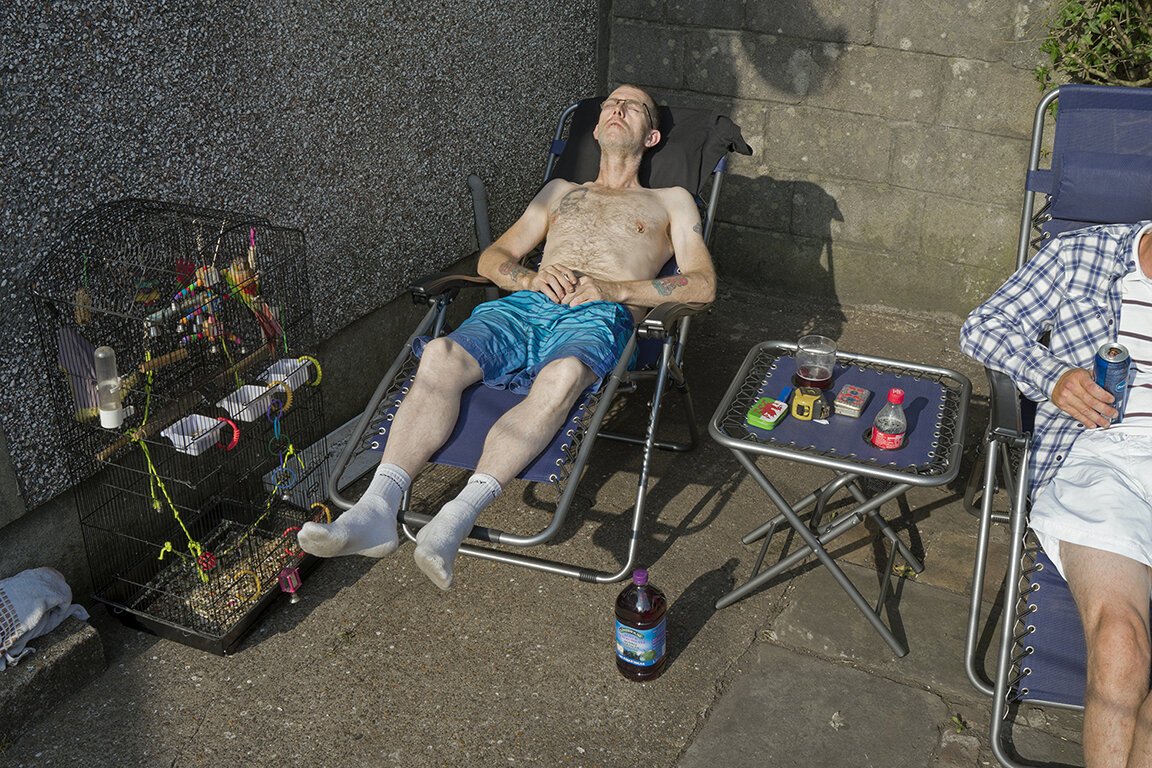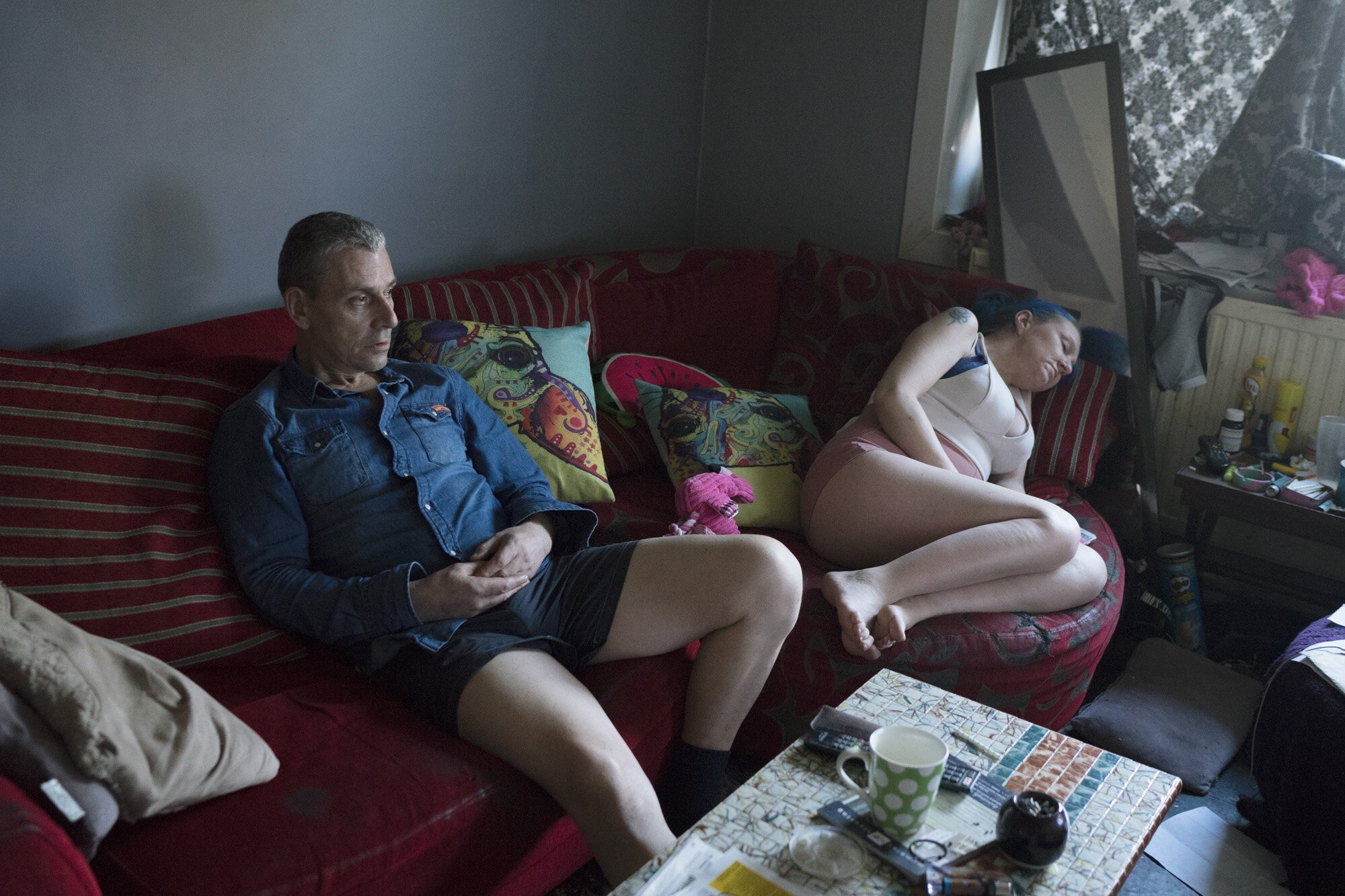The Layers of Familiarity: Exploring 'The Budgie Died Instantly'
Welcome to this edition of [book spotlight]. Today, we uncover the layers of 'The Budgie Died Instantly,' by Nik Roche (published by Setanta Books). We'd love to read your comments below about these insights and ideas behind the artist's work.
In this revealing interview, we step into the world of Nik Roche, a Welsh documentary photographer whose late bloom into photography has led to the poignant exploration of hidden societal layers. Roche's journey from garden design to capturing the raw essence of human conditions offers a fresh lens on documentary storytelling. As we discuss his groundbreaking debut, "The Budgie Died Instantly," Roche shares the intimate connections and unexpected inspirations behind his work, inviting us to look beyond the surface of everyday life.
Inspiration and Impact of 'The Budgie Died Instantly': What was the initial inspiration behind "The Budgie Died Instantly," and what impact do you hope this monograph will have on readers' perceptions of the community you've documented and the broader themes of social change and individual behaviour?
When I was fourteen my brother went to maximum security prison. During his time incarcerated my parents separated and divorced. My family unit was broken. I still carry these childhood experiences with me. Recently, I studied for an MA in documentary photography at the University of South Wales (the former Newport School of Documentary Photography). The Budgie Died Instantly formed the basis of this as I began to explore ways to create a shared visual language as a form of communication between people who have experienced life trapped in a systematic cycle within the prison system and engage in conversations around this and society. I am under no illusion that my work will generate social change but if it can engage people outside of this in any sort of conversation then it is a start in changing peoples opinions by being more informed.
Intimate Community Portrait: Your work presents an extremely intimate portrait of a community through the guidance of a friend. Can you describe the initial challenges and breakthrough moments in gaining such deep access to this community?
I knew where to find people who had experienced life with family members spending time in and out of the prison system. I happened to meet someone who became a friend. He had been in prison for twenty-six years and I met him during two years he happened to be living outside of this. As I earned his trust he opened doors, so to speak, to further my access into his world and that of the community where he was born and still lived.
Navigating Domesticity and Disorientation: The book mentions a "disorientation of our own presumptions" through prolonged engagement with the images. How did you navigate capturing the familiar yet increasingly alien aspects of domestic life within this community?
My work is very layered but, broadly, looks at notions of home and belonging, love and relationships and what all of this means to people when you add lengthy periods of time trapped in a cyclical system of incarceration and freedom. The work is not about a particular place or specific people as such, rather, Budgie is representative of many people and places.
Incorporating Multimodal Narratives: Alongside your imagery, the book includes hand-written notes, shopping lists, and transcribed conversations. How do these additional elements contribute to the overall narrative and understanding of the community?
The letters that reappear throughout Budgie are those written to me from my friend in prison. I consider text and image as one and the same. Text allows the reader to form an image without being directly informed by an image. It creates a disturbance which is, hopefully, formed by the reader which will also be unique to the individual. Like characters in a novel given their voice and image by whosever hands it is in. The transcripts are darkly comical. I struggled to make pictures of the humour, of which there were many occasions. I decided to let their words speak for themselves and the audience can decide how this looks. This also raises the questions of preconceptions as to how this looks and what is the basis for this. I offset the, often brutal, text with images of nothing in particular. This, I hope, creates a sense of unease and instability in the narrative.
Exploring Fear, Desire, and Banality: Your project peels back layers of fear and desire amidst the banality of daily life. What drew you to explore these themes, and how did you approach them visually and narratively in your work?
Within the notions of family and home this is also a love story where life experiences, often traumatic, leave people seeking experiences of love, friendship and belonging. This looks different throughout society. The work intends to leave the audience with an emotional response that is left unsaid in the book. There is also the threat of violence and trauma even though there are only hints towards this with very few directly related images of this. Although I was witness to extreme violence, threat and danger it felt far too straightforward to photograph this. As the photographer Duane Michals said, ‘Do not show me what I already know’. I decided early on to give more of a sense of what exists outside of the frame.
Documenting Love and Compassion: Amidst the backdrop of challenging themes, your book also finds moments of love, compassion, and hope. How did you ensure these aspects were represented in your work, and what significance do they hold in the broader narrative?
It was relatively easy to find love and compassion because it is, possibly, more prevalent in these communities. It was the first experience I had in their company. However dysfunctional they may appear from the outside they can be extremely tight with each other.
All of the pictures are metaphors really. There are images of white doves, in flight, throughout the work. I met a man who lived in the community where the work was made. He had just acquired young doves that he intended to raise. He taught me how they learn behaviour in captivity. First they are kept in a cage and fed. I saw this as babies learning who their parents were and the first signs of family love. This cage is then lifted higher so they can begin to orientate themselves. In this case it was on the roof of a stables opposite a children’s school which had a clock on its roof. From here you can start to open the doors to their cage and they will, tentatively, fly off but return to be fed. I considered this a representation of home. Later, the doves can be taken five hundred miles away and released. They will find their way back to the clock where their cage is. There is the direct link here, obviously, to prison with the cage and the urge to return to a place we call home. In the case of the friends that I made, often to the place where their crimes were committed.
Gesture and Reading Situations: Given your interest in gesture and the reading of situations through unremarkable moments, how did this focus shape your photographic choices and the storytelling within "The Budgie Died Instantly"?
I would describe my work as the result of being a fully immersive documentary photographer. The work is made with people whose lives I invest a lot of time in. It is formed through friendship, mutual respect and an awful lot of trust. I may not even make a picture for months on end until it feels right to make one. I always have the words of Duane Michals in mind, ‘I’m not interested in what something looks like, I want to know what it feels like’. Human gestures are without borders and go beyond a spoken language. This is happening naturally and right in front of me without staging or direction.
Future Projects and Evolving Interests: With "The Budgie Died Instantly" as your debut monograph and other projects in progress, how do you see your interests and approach to documentary photography evolving? What themes or questions are you seeking to explore in your future work?
The work is in chapters. Budgie is the first of three. It starts in the wider community, then focusses on a group of friends within it and then turns to a particular person within this friendship group. I’m currently working on a final edit of this book which I hope will be published by the summer. It’s about my dear friend Tony who lived in a cave in Nepal but had a house in a former South Wales mining town but preferred to live in an Arctic bell tent in the woods behind.
I was recently fortunate to collaborate on a photobook with some incredible photographers in response to ‘Mother and Father’ the beautiful work by Paddy Summerfield.
To discover more about this intriguing body of work and how you can acquire your own copy, you can find and purchase the book here.
Nik Roche (Website, Instagram)is a Welsh documentary photographer who transitioned to photography after a career in garden design. He's pursuing a Documentary Photography MA at the University of South Wales and focuses on the impact of social change and institutions on behavior. Roche's work, known for its humanistic and immersive style, explores the intricate lives of people, questioning states of mind and senses of place. His notable projects include "The Budgie Died Instantly" and "It’s Hard To Report A Stolen Bike, Stolen."
We'd love to read your comments below, sharing your thoughts and insights on the artist's work. Looking forward to welcoming you back for our next [book spotlight]. See you then!









